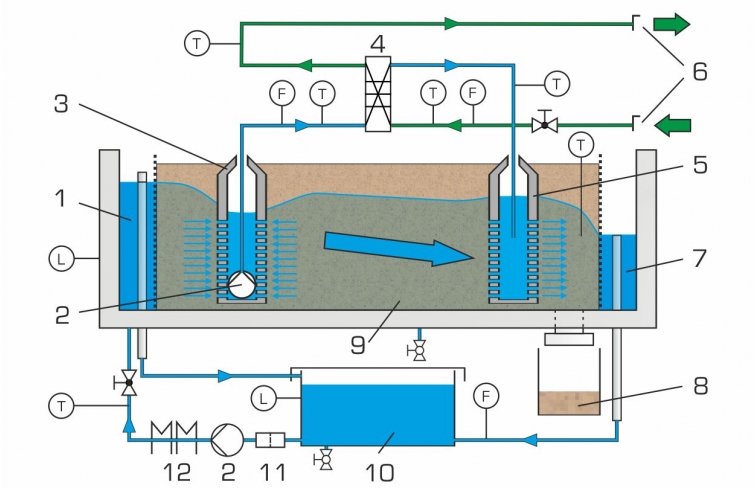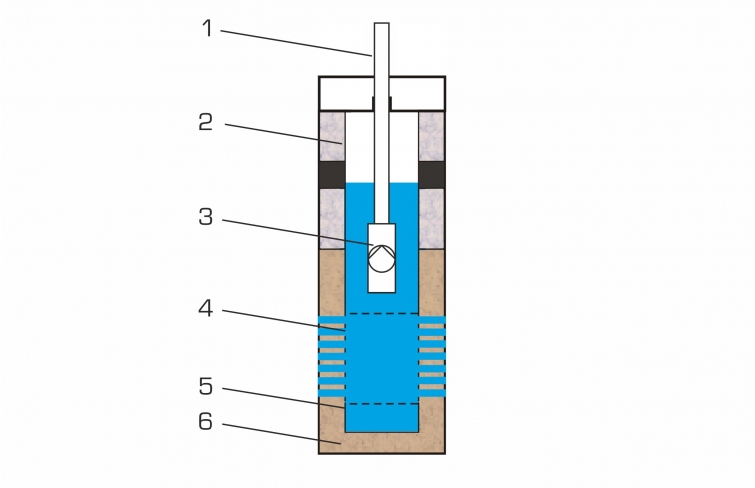The scope of geothermal energy is the study and use of the heat and the temperature distribution in the ground. A geothermal plant uses the thermal energy stored below the earth’s surface. Using a two-well system, for example, thermal energy is extracted from the near-surface groundwater for heating purposes. ET 264 demonstrates the operation of such a two-well system.
The trainer contains a closed water circuit with storage tank and pump. The core element is a sand bed through which water flows with a production well and an absorption well. Water (groundwater) flows in and out via two side-mounted chambers.
In the experiment, the groundwater is delivered from the production well to a heat exchanger and the thermal energy is transmitted from the groundwater to the working medium. The water then flows into an absorption well. From here, the water is delivered via the drain chamber into the storage tank, is heated and returned to the experimental section. The groundwater temperature in the storage tank is adjusted by means of a controlled heater. The flow rate of the pump in the production well can be adjusted. The groundwater flow through the sand bed is adjusted using height-adjustable discharges. The working medium is added either via the laboratory supply or via the WL 110.20 water chiller.
From the measured temperatures and the flow rate, the transmitted thermal output is determined. A multi-tube manometer visualises the groundwater levels of both wells. The measured values are displayed on the trainer and can be transmitted simultaneously via USB directly to a PC, where they can be analysed using the GUNT software included. By means of the measured values, a heat pump which is connected to the two-well system is simulated.


















